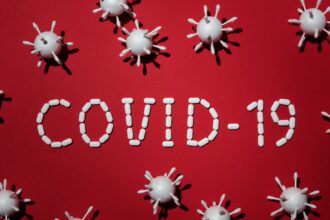Are you trying to lose weight but only counting protein, fats, and carbs? Don’t forget fiber. Though often overlooked, fiber could be the secret ingredient for weight loss success. A registered dietitian explains how fiber affects your body, weight loss, and overall health.
In today’s trend of counting macros, fiber gets left behind. But fiber helps your digestion and overall health, lowering bad cholesterol (LDL), reducing blood pressure, and protecting your heart. New studies also show fiber may support weight loss, improve insulin sensitivity, and help you feel full longer.
Sadly, most people don’t eat enough fiber. Only around 5% of Americans get the recommended daily 28–34 g. That raises the question: how can fiber help you lose weight, and how do you eat more of it?
1. What Is Fiber and Why Is It Important?
Fiber is a part of plant foods that your body can’t fully digest. Instead of breaking down like other carbs, fiber travels through your digestive system. There are two types:
- Soluble fiber: dissolves in water and turns into a gel-like substance. It helps slow digestion.
- Insoluble fiber: adds bulk to stool and helps keep things moving in your gut.
Why fiber matters:
- Keeps digestion smooth and prevents constipation
- Lowers LDL (bad) cholesterol
- Lowers blood pressure
- Protects your heart
- Helps with blood sugar control and insulin sensitivity
- Keeps you full, which may help you eat less and lose weight
2. Can Fiber Help You Lose Weight?
Yes. Fiber helps with weight loss in several ways:
- Feeling Full Longer: Soluble fiber forms a gel in your stomach. This slows digestion and keeps you satisfied.
- Eating Less: When you feel full, you eat less at your next meal.
- Slow Sugar Absorption: Fiber slows down how quickly your body absorbs sugar, preventing a sudden rise in blood sugar and insulin, which can lead to fat storage.
- Promotes Gut Health: Fiber feeds good bacteria in your gut. Some of these bacteria support weight control and other good health functions.
So, adding fiber to your diet is a strong strategy for fiber and weight loss.
3. How Much Fiber Do You Need?
Here are daily recommendations:
- Adult men: up to 34 g of fiber per day
- Adult women: about 28 g of fiber per day
Kids, teens, older adults, or pregnant people have different needs:
- Children (4–8 years): 25 g
- Teens: 26 g (girls), 31 g (boys)
- Older adults: 21–30 g
- Pregnant women: 28–30 g
Aim for about 25–35 grams daily. But go slowly. If you suddenly eat too much fiber, you might get bloating or gas. Push slowly and drink plenty of water.
4. Can Fiber Supplements Replace Whole Foods?
Whole foods are better:
- They contain many nutrients, vitamins, minerals, and antioxidants.
- They offer a mix of soluble and insoluble fiber.
- They help control your appetite because they fill you up naturally.
Fiber supplements (like psyllium husk) can help if your diet lacks fiber:
- They supply mostly soluble fiber—good for digestion and blood sugar.
- They can help with constipation.
- But they lack the full nutrition of whole foods and may not be as filling.
So, if you can eat whole foods rich in fiber, do that. If you’re not getting enough, supplements are okay—but don’t rely only on them.
5. Is Fiber “Nature’s Ozempic”?
You may have heard fiber called “nature’s Ozempic.” Ozempic is a brand-name drug that helps with weight and blood sugar. While fiber isn’t a medicine, it does share some benefits:
- Helps you feel full
- Slows digestion
- May help with blood sugar control
But fiber is not a drug. It is a natural and safe nutrient. It won’t replace medication if a doctor prescribes it, but it helps support healthy weight and glucose management. It’s a great first step for anyone wanting better health.
What Are the Best High-Fiber Foods?
After the podcast, Dietitian Lisa Valente shared her top high-fiber foods:
- Frozen Berries
- Strawberries, blueberries, raspberries, and blackberries.
- Great in smoothies, yogurt, or oatmeal.
- Fibrous, affordable, and last longer than fresh.
- Whole Wheat Pasta
- Much more fiber than white pasta.
- Pairs well with vegetables or protein for a healthy dinner.
- Chia Seeds
- High in fiber, omega-3s, and some protein.
- Use on oatmeal, yogurt, or chia pudding.
- Small seeds with big nutritional value.
Here’s a quick list of top high-fiber foods (per 100 g cooked servings and approximate fiber content):
| Food | Fiber (g) |
|---|---|
| Lentils | 7.9 |
| Black beans | 8.7 |
| Split peas | 8.3 |
| Artichokes | 5.4 |
| Chia seeds (2 Tbsp) | 10.6 (in 28g) |
| Berries (mixed frozen) | 3–4 |
| Broccoli | 3.3 |
| Whole wheat pasta (cooked) | 6.3 |
| Oats | 2.5 – 4 |
| Whole grain bread (slice) | 2 |
Regularly including these helps reach your fiber goals.
Mixing Fiber-Rich Foods Into Your Day
Here are simple meal ideas for fiber for weight management:
Breakfast
- Oatmeal with chia and frozen berries
- Whole grain toast with natural peanut butter
- Greek yogurt with berries and seeds
Lunch
- Lentil or bean soup with whole wheat pita
- Whole wheat pasta salad with grilled veggies
- Chickpea salad sandwich on whole grain bread
Dinner
- Stir-fry with brown rice, beans, and vegetables
- Baked sweet potato with black bean topping
- Veggie-rich chili with high-fiber beans
Snacks
- Fresh veggies with hummus
- Apple slices with almond butter
- Whole grain crackers with cheese
Hydration
- Always drink water—fiber works best with water.
- Fiber plus fluids = better digestion and fullness.
Tips for Adding Fiber Slowly
Jumping into a high-fiber diet can cause bloating or gas. Prevent that by:
- Start small: Add fiber gradually (e.g., 5 g extra per day).
- Increase fluids: Drink water to help fiber move.
- Cook vegetables: Steaming veggies can lessen gas.
- Soak beans: Rinse canned beans or soak dried beans for easier digestion.
- Choose a variety: Mix soluble (like oats, beans) and insoluble (like whole grain, broccoli) fiber sources.
Fiber’s Impact on Health
- Blood sugar and insulin: Fiber slows sugar release, lowering insulin spikes and reducing risk of type 2 diabetes.
- Cholesterol and heart health: Soluble fiber reduces LDL, lowering heart disease risk.
- Gut health: Promotes beneficial gut bacteria.
- Blood pressure: Helps maintain healthy blood pressure.
- Cancer prevention: High-fiber diets may lower colon cancer risk.
- Weight control: Keeps you satisfied, reduces overeating, and supports healthy weight loss.
Can Fiber Alone Cause Weight Loss?
Fiber won’t magically shrink your body, but it makes weight loss easier by:
- Helping you feel full
- Reducing calorie intake
- Supporting stable blood sugar
- Promoting overall health
For real results, pair fiber with:
- Balanced protein, healthy fats, and complex carbs
- Regular exercise
- Support from doctors or dietitians
Together, a fiber-rich diet and disciplined habits support lasting weight and health results.
Conclusion
Fiber is a powerful tool for those wanting to lose weight and improve their health:
- Helps you feel full longer
- Eases digestion and prevents constipation
- Lowers cholesterol and blood pressure
- Helps stabilize blood sugar and insulin
- Supports gut health
Get 25–35 g of fiber daily from a mix of whole foods and, if necessary, fiber supplements. Include foods like beans, whole grains, fruits, vegetables, chia seeds, and frozen berries.
Fiber won’t replace your weight loss plan, but it can enhance it. Add more fiber and watch it help you feel full, eat less, and reach your weight management goals.
Also Read: Why Plant-Based Burgers Are Here to Stay










